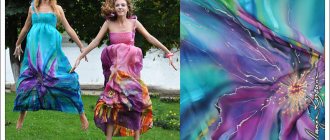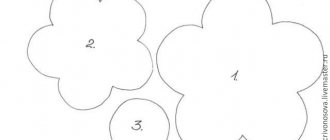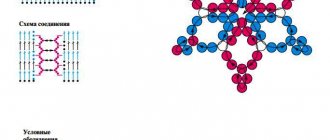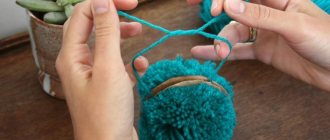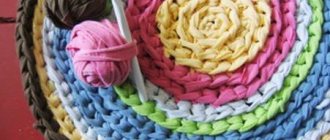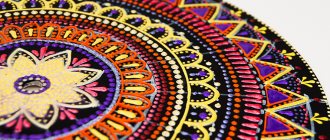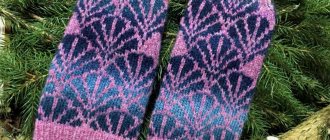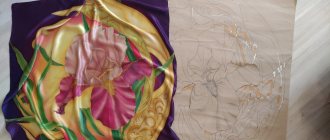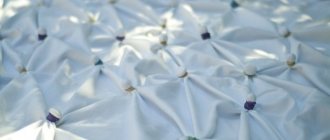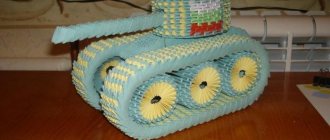History of origin
The matryoshka doll has long been a Russian folk tradition, which was started by the artist Sergei Malyutin, a staunch follower of national color and style. The doll, carved from solid wood, has become the most striking and recognizable symbol of our people. And all because the skillfully depicted woman in a festive outfit was able to convey the entire depth of the Russian soul and ethnographic traditions.
The original feature of inserting one nesting doll into another was invented thanks to a hint in the form of a Japanese detachable toy “the sage of Fukuruma”. Today, the Russian nesting doll is a world-famous souvenir, and a set of toys consisting of 37 dolls is included in the Guinness Book of Records.
Features of the Russian beauty
Matryoshka represents a young woman who cannot be imagined without an elegant scarf and rosy cheeks. The doll always has a round shape.
Red color is predominant; using it, a bright matryoshka is obtained; painting on wood in this case (toy outfit) cannot do without this color.
Large flowers must be present on the apron, because the nesting doll is the personification of a peasant girl, rather than a city one.
And although the above features make them similar to each other, as if they were made from the same template, the types and shades of paints used depend on the individual region and its traditions.
Do-it-yourself painting of nesting dolls: basic methods and rules
All existing methods of painting nesting dolls are conditionally divided into 2 groups: this is traditional painting, rooted in the history of the toy, or the author’s style, which allows you to get a completely new figurine. If the craftswoman does not go deep into the life of past centuries, most likely she will adhere to the basic rules in painting a nesting doll, but she will also add a lot of her own. Whatever painting method you choose, be sure to follow several recommendations:
- Matryoshka is an image primarily of a person and in most cases a woman, even a girl, as evidenced by the perky blush, purity of the face and softness of the gaze.
- Red color is present in any painting, even if it is only for a few details and not the main one. This is a traditional color.
- The free space on the surface is always occupied by images of flowers, mainly wildflowers, since the vast majority of nesting dolls originally depicted peasant girls.
It is also necessary to note the difference in painting methods in terms of the materials used. Toys made in Polkhovsky Maidan must be primed before covering them with aniline paint diluted with a weak solution of alcohol. The famous “Sergiev” nesting dolls, on the contrary, are not primed, and also do not have any backing at all, but they can have a watercolor layer, which is necessarily fixed with varnish. Due to it, color density is also achieved, if necessary.
Varieties
In each region of Russia, nesting dolls are painted in a special way. There are certain types of world-famous souvenirs from Russia. Each of them is unique and differs in certain characteristics:
- Semenov's nesting dolls are characterized by a primitive style, which is accessible even to beginning craftsmen who do not have an artistic education. Another sign of the Semyonovskaya matryoshka doll is the apron with the image of a huge rose. For painting, yellow, red and blue paint are most often used.
- The painting of nesting dolls in the Tver style is distinguished by its subjects. In this case, historical characters are most often depicted. Also on the apron can be landscapes, flowers or masterpieces of Russian architecture.
- Sergeevsky style of painting nesting dolls is considered one of the most popular. Often the figures have many small details - it could be a sheaf of ears of corn, a bouquet of flowers or a basket of berries.
- Vyatka nesting dolls have blue eyes and a shy smile. Figurines made in the Vyatka style are considered the most popular around the world. The uniqueness of the products lies in the design using natural straw.
We learn the technique of painting a matryoshka doll in a master class for beginners
The Sergeevsky style is the most popular today - perhaps matryoshka dolls of this type are the most recognizable. The style got its name from the city of Sergiev Posad, where this technique was born, but it changed greatly over time.
Very often, “Sergiev’s” nesting dolls have many small details, and in the painted hands they can hold any objects: a basket with berries, a bouquet of flowers, a sheaf of ears of grain. At the same time, traditional painting reflected moments of everyday life familiar to the average person and depicted a variety of characters: peasant women, merchant women, brides. You can recognize the “Sergiev” nesting doll by a bright handkerchief painted with flowers (if it is a female character) and sparingly indicated facial features written in dark, clear lines. The photo below shows characteristic images of Sergev's nesting dolls.
“Semyonovsky” style of painting nesting dolls.
For the Semyonovskaya nesting doll, the priority is not the set of certain elements, but the choice of colors. Rich warm colors must be used: red, yellow, green, sometimes blue paint is added to them. At the same time, key details are outlined in black, which gives the toy incredible clarity and expressiveness.
Among the “Semyonov’s” nesting dolls you will not find male characters or young ladies in expensive dresses. All the figures represent modest peasant girls in simple sundresses with floral patterns. The dolls must have a scarf on their heads, which often has a polka dot pattern. Of course, there are other types of painting: Tver, northern Vyatka, and the famous Khokhloma. They all have unique features.
Decorating a wooden figurine is a simple task, but very exciting.
We invite you to master painting a matryoshka doll - a step-by-step master class for beginners will also allow those who consider themselves incapable of creativity to do this. To paint a matryoshka doll you will need:
- wooden blank
- acrylic paints
- brushes
- primer
- simple pencil
- paper and pencil
- cotton swabs and toothpicks
Master class “Painting a nesting doll”:
1) The wooden blank must be thoroughly sanded and coated with a primer, while the patterns must be applied with a wide synthetic brush. If acrylic primer is used, it must be diluted with water. In some cases, it is necessary to preserve the natural structure of the tree - then only the area where the doll’s face will be located is needed.
2) We outline the main elements of the outfit with a simple pencil and begin to paint, first of all we paint the large details - an apron, a scarf. To be on the safe side, you can draw a sketch of the matryoshka’s clothes on paper.
3) Now you can move on to small elements and patterns. To mix shades, it is convenient to use toothpicks and cotton swabs.
4) Lastly, we “make” the face: you need to draw eyes with eyelashes, eyebrows with a house, lips and a gentle blush in circles. For children, this stage usually seems the most difficult, because... requires extreme care.
5) We draw thin black contours with a brush No. 0, having previously practiced on paper.
6) The matryoshka is ready!
Painting nesting dolls
The painting process occurs using special techniques, which are divided into several stages. Priming, painting and varnishing require an artistic approach, so it will not be so easy for a beginner or a lover of folk art to cope with.
A truly artistic style involves drawing every small detail, right down to the doll’s facial expressions, on which the expression on the matryoshka’s face depends. Only a professional artist can convey sadness or joy. This is the only way that painting of nesting dolls turns into a real work of art, and it directly depends on the artistic training of the master.
Due to the high demand for these products, enterprises producing Russian souvenirs are working hard, increasing the pace of production, and this, unfortunately, negatively affects the quality of the products.
Painting nesting dolls step by step
When starting to paint a matryoshka doll, the first thing you need to do is decide on the appearance of the figurine, choose a pattern and suitable paints. It is best for beginning artists not to set complex goals; initially, you can settle on a simple, uncomplicated drawing. You need to make a sketch, it is advisable to make a projection of the front and rear parts.
The materials you will need are wooden figures, paints (acrylic or gouache), a set of brushes of different sizes, acrylic primer and varnish. Before painting begins, the surface of the figures is passed over with fine-grained sandpaper, all irregularities will be smoothed out, and the parts will be adjusted to each other. It will not be possible to paint a matryoshka beautifully and neatly if there are even small irregularities on it. It is best to mask roughness with a special wood putty.
After this, you need to shake off the dust from the wooden figurine and treat it with a primer. Acrylic is perfect for this job. If there is none, then you can use a mixture of PVA glue and water (mix them in approximately equal proportions). It covers the outside of the workpiece.
Once the primer is dry, don't rush into painting. First of all, all the patterns need to be drawn with a simple pencil. The lines should be clear and bold. Only after this step begins painting the nesting dolls with paints. To make the work easier, the figurine is secured to the stand using an awl or needle. Painting begins with large areas, and only then moves on to smaller ones.
It is most convenient to cover the top part of the nesting doll first, and then the bottom. The layers must be transparent so that the markings made in pencil can be seen. However, the paint should be applied evenly and without drips. The brushes must be the right size for the parts. It is better to draw small patterns and highlights with a toothpick. Having finished painting, the nesting doll is left to dry completely. Finally, the figurine needs to be varnished (PF-283 or 157 is suitable).
Adviсe
Beginners are not recommended to use watercolors: only a skilled artist can handle it. The paint dries quickly, and a poorly executed brushstroke leaves unsightly stains. Therefore, if there is not enough practice in performing folk paintings, it is best to opt for denser paints.
Acrylic varnish cannot be used as a topcoat. The paint applied to the surface of the matryoshka will flow, the coating itself turns matte, and this will not give the matryoshka a presentable appearance.
A wooden blank - a matryoshka doll for painting - is amazing, because the master can decorate it at will. These may be classic images in the form of rosy-cheeked maidens in bright scarves, but everything can also end with original design experiments. It is very important to come up with a good idea, and the rest can be learned.
Painting a matryoshka doll step by step for beginners. Master class with photos
Painting a matryoshka doll - “Turnip”
Author: Shibanova Tatyana Valerievna, teacher of service labor, MOAU secondary school s.
Tomskoye, Seryshevsky district, Amur region Master class: Painting a matryoshka doll - “Turnip”
Purpose: The product is intended for decorating an office for service workers. Can be used as a visual aid for art lessons in grades 3-4.
Mom for the folder, Grandmother for the grandfather. We pull - we get tired. We pull again. Oh, and the turnip grew big! We feel sorry for us children, Grandma and Grandpa. Come on, everyone, together, let’s pull out the turnip, together with mother, grandmother and grandfather. For work we will need: 1. Wooden blanks of nesting dolls.
2. Acrylic paints. 3. Brushes, pencil, palette, water jar 4. Colorless varnish Matryoshka dolls fell on my eyes. It was decided to paint them, but I wanted an unusual, fairy-tale painting. Why is a fairy tale about a turnip not a reason for painting? So, in order:
1. We apply a contour drawing to the blanks; you can first draw a sketch. We carefully draw faces and small details. When I started work, one problem arose: there were five preparations, and there were six heroes in the fairy tale. It was decided to draw the smallest character, a mouse, on a matryoshka doll with a cat. 2. Fill in the faces of the grandfather, grandmother and granddaughter, as well as the hands, with flesh color. 3. We take on the grandfather’s painting. Fill the mustache, beard, and hair with color. We tint clothes and turnips. Using a thin brush we draw small details - eyes, wrinkles, hairs on the beard and mustache, etc. The main thing is not to make the entire stroke black. You can use brown or white strokes, it all depends on where the stroke is being made. Polka dots on a shirt are done using a cotton swab - a poke. We coat the grandfather with water-based varnish, it does not smell and dries quickly. 4. So, let’s take on the headstock - fill the clothes, scarf, and bast shoes with tone. Using a thin brush we work on the face, add wrinkles, and paint the headscarf, apron and sleeves with floral designs. Using a poke we make peas on the dress. Don't forget about the varnish. 5. The granddaughter signs according to the same principle. 6. Fill the blank for the Bug with one color, and then paint it with a thin brush and varnish it. 7. The cat will be white, so the drawing is done in a contrasting color. As I already said, there were only five blanks, and six heroes of the fairy tale, so I had to draw the mouse sitting at the cat’s paws. So the fairy tale is ready.
We recommend watching:
Painting a wooden nesting doll yourself Painting a bird from wood. Master class with step-by-step photos DIY earrings. Master class with step-by-step photos DIY painting of wooden cubes
Similar articles:
Club lesson summary. Wood painting
Painting a cutting board. Master Class
